Swiss watches
The Guide to Replica Rolex 1603 Vintage Watches
The Rolex 1603 is a vintage classic, artfully merging timeless design with impressive functionality. As a key member of the renowned Datejust collection, this model has carved out a special niche in Rolex’s storied history. Produced from the 1960s to the 1970s, the replica Rolex Datejust 1603 was designed for watch enthusiasts who valued understated luxury. Its ongoing popularity among collectors is a testament to its versatile aesthetics, reliable performance, and representation of a golden era in horology.
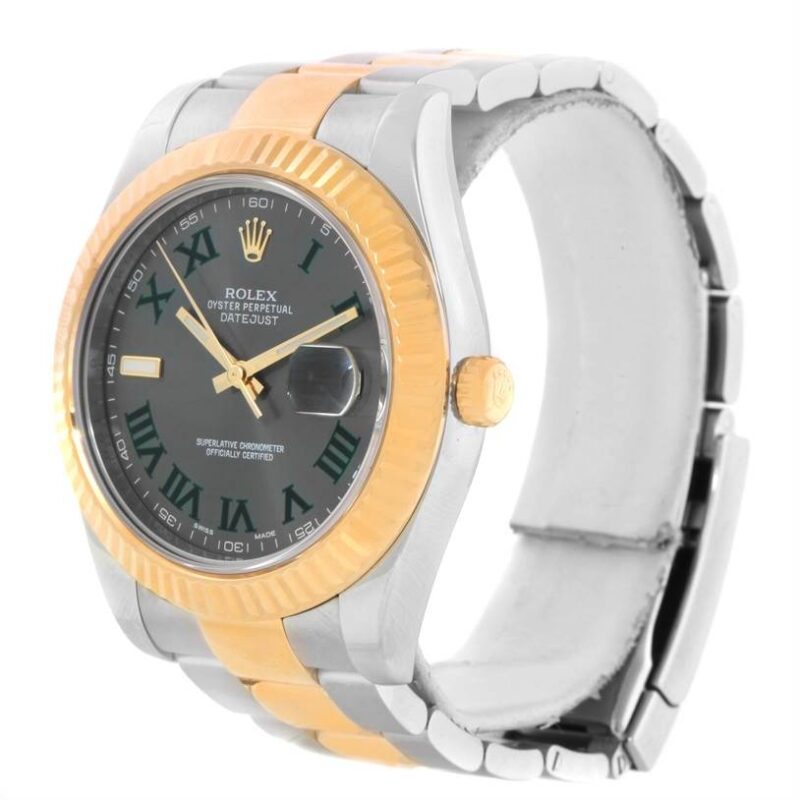
The Legacy of the Rolex Datejust 1603
The Rolex Datejust 1603 exemplifies the brand’s dedication to innovation and classic design. Its narrative is interwoven with Rolex’s pioneering spirit and the evolution of luxury replica watches. Understanding its history enriches the context for both collectors and enthusiasts.
Origins of the Datejust Line
The Datejust line was launched in 1945, marking a pivotal moment in watchmaking as the first self-winding waterproof chronometer wristwatch to feature a date display on the dial. This innovation set new standards for functionality and elegance.
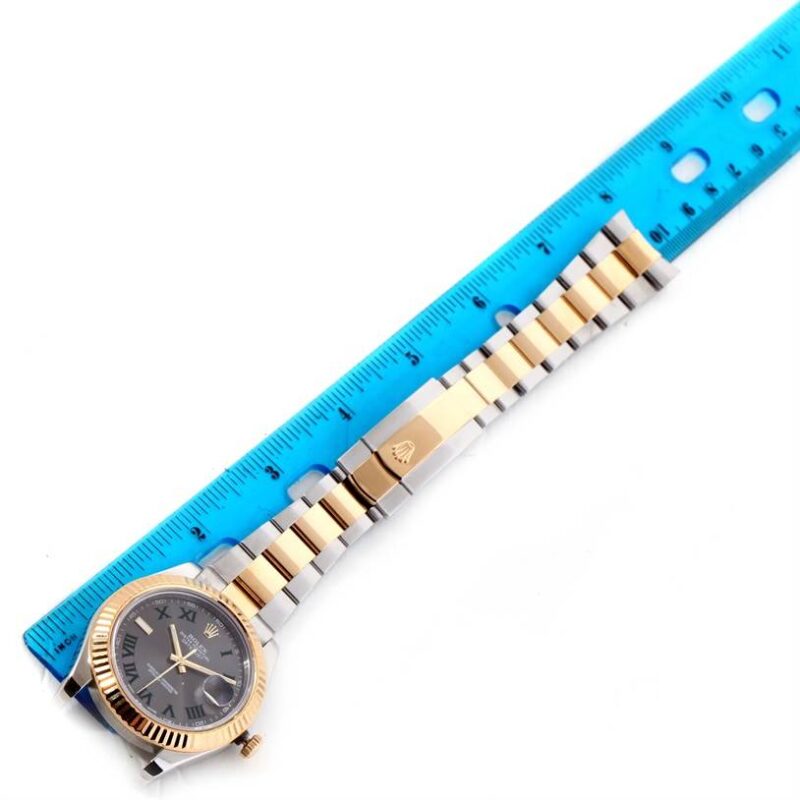
The Datejust 1603 emerged in the 1960s, refining the classic elements that made the Datejust an instant success while introducing subtle enhancements to attract a new generation of collectors. The 1603 solidified the Datejust’s reputation as a versatile watch, suitable for both formal occasions and everyday wear.
Distinctive Features of the Datejust 1603
One of the hallmark traits of the Rolex Datejust 1603 is its unique engine-turned stainless steel bezel, contrasting with the solid gold fluted bezels of its pricier counterparts. This design choice not only distinguishes it visually but also makes it accessible to a wider audience while retaining the prestige associated with Rolex.
Over its production run, the movement inside the Rolex 1603 underwent significant improvements. Early models utilized the Caliber 1565, known for its robustness and accuracy, while later versions featured the enhanced Caliber 1575, which introduced features such as hacking seconds for precise time-setting. These advancements underscore Rolex’s commitment to precision and continuous innovation.
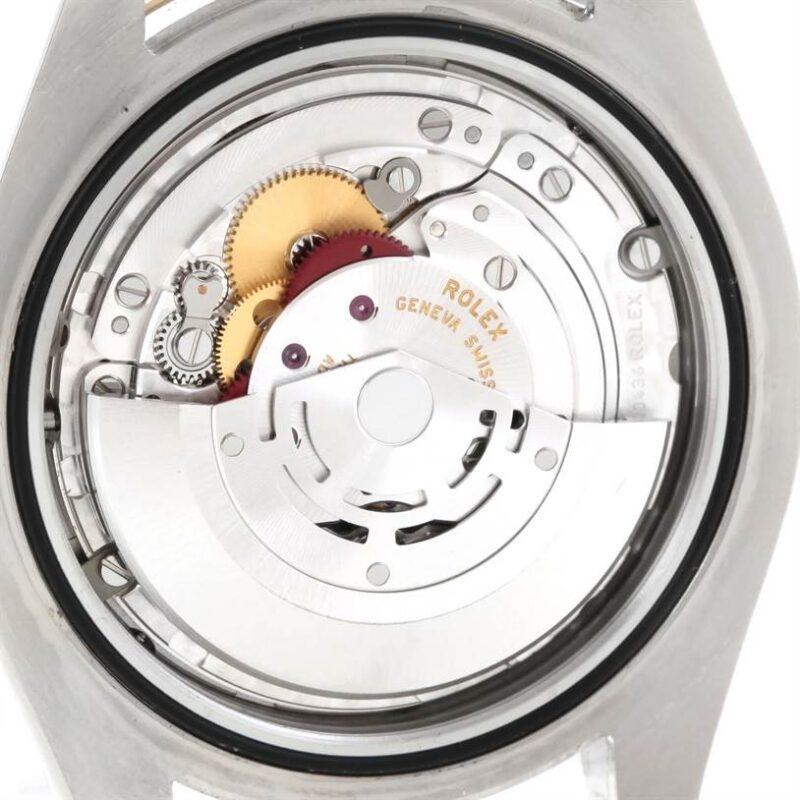
Compared to other Datejust models of its time, the 1603 strikes a remarkable balance between luxury and understated elegance. Its stainless steel construction enhances durability and versatility, making it a favorite among collectors who appreciate both its historical significance and everyday practicality.
Case Material and Design
The 1603 boasts a classic 36mm case diameter, a size that has stood the test of time and remains appealing in today’s market. This dimension offers substantial wrist presence without being overwhelming, making it suitable for a variety of wrist sizes and styles.
Central to its durability is the legendary Oyster case, crafted from high-grade 904L stainless steel. This design is celebrated for its corrosion resistance and ability to retain its luster over time. Additionally, the Oyster case provides impressive water resistance, a hallmark of Rolex’s commitment to creating durable watches.

The Datejust 1603 also offers versatile bracelet options. The iconic Jubilee bracelet, with its five-piece link design, lends a dressier appearance and exceptional comfort, while the robust Oyster bracelet offers a sportier look. Both styles enhance the watch’s adaptability for different occasions.
Dial Options
The Datejust 1603 features an array of captivating dial options, including classic silver, elegant champagne, deep black, and vibrant blue. This variety enhances personalization and adds to the model’s collectibility.
Hour markers come in two primary styles: stick markers for a clean, contemporary look or Roman numerals for a more traditional feel. Some rare variants feature diamond-set hour markers, adding a touch of luxury. All markers are typically crafted from high-quality materials and applied by hand, highlighting Rolex’s meticulous attention to detail.
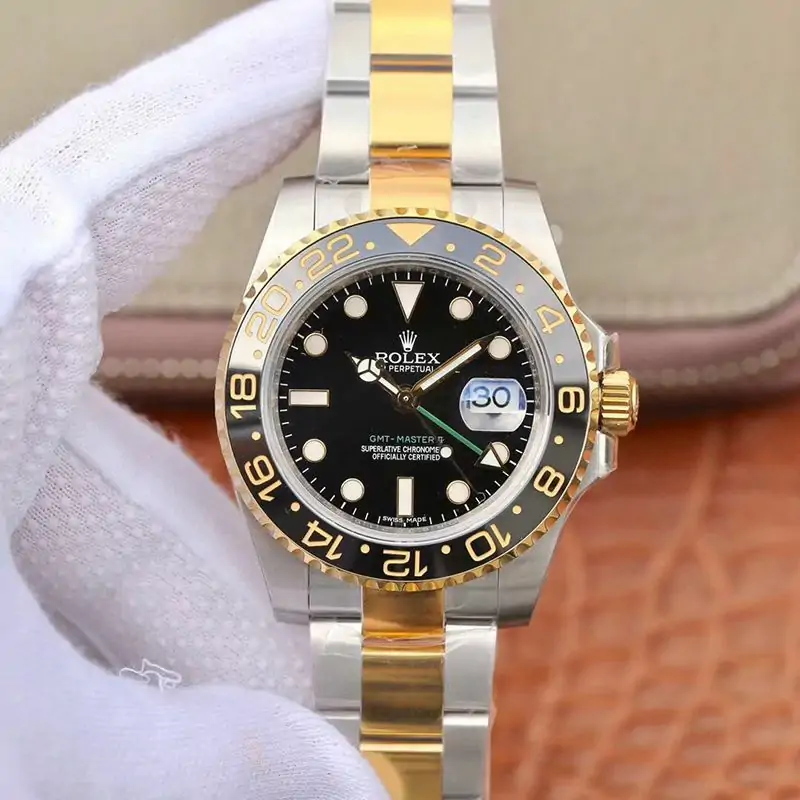
A defining characteristic of the Datejust line is the Cyclops lens, a magnifying bubble over the date window at 3 o’clock. This practical feature enhances legibility and has become an iconic design element. Vintage enthusiasts particularly appreciate the warm patina that develops over time, adding unique character to each piece.
Movement and Performance
At the heart of the Datejust 1603 is its self-winding mechanical movement. Early models housed the Caliber 1565, while later versions featured the upgraded Caliber 1575, both renowned for reliability and precision.
These movements were innovative, incorporating features like the Microstella regulation system for fine-tuning accuracy. The Caliber 1575 introduced hacking seconds, allowing for precise time-setting. This technical attention ensures that even decades-old 1603 models can still perform admirably when well-maintained.
Regular servicing is crucial for maintaining optimal performance. A properly maintained 1603 can meet or exceed chronometer standards, showcasing the enduring quality of Rolex craftsmanship.
Considerations for Buying a Rolex Datejust 1603
Acquiring a Rolex Datejust 1603 can be an exhilarating journey into vintage luxury watches. However, navigating the market necessitates careful consideration of several factors to ensure an informed decision.
Pricing Guide and Market Trends
A Rolex Datejust 1603 in good condition typically ranges from $4,000 to $7,000, making it an appealing choice for both seasoned collectors and newcomers. Several factors can influence the price, with overall condition being paramount. Well-preserved examples command premium prices, while rarity – especially concerning dial variations – also plays a significant role.
The Datejust 1603 has demonstrated steady appreciation over the years. Although its growth isn’t as dramatic as some sports models, its consistent performance and broad appeal suggest stable long-term value. Its classic design and historical significance make it a solid investment for those seeking wearability and potential value retention.
Verifying Authenticity
Understanding how to spot a counterfeit fake Rolex is essential when verifying a Datejust 1603’s authenticity. Key steps include checking serial and model numbers against Rolex production records, examining the quality of the dial printing, and assessing the precision of case finishing. Additionally, the movement should be inspected by a qualified watchmaker to confirm it’s the correct caliber for the model and production period.
Collectors should remain vigilant about aftermarket parts, as they can significantly impact a watch’s value. All-original examples are often more desirable than those with replacement components, even if showing signs of age.
Assessing Condition and Restoration
Evaluating the condition of a vintage Datejust 1603 involves examining several critical areas. The bracelet should be inspected for stretch, a common issue that affects comfort and value. Collectors often prefer original dials with even patina over refinished ones. The crystal should be checked for scratches, while the bezel should be examined for excessive wear.
The decision to restore a vintage clone watch or maintain its original condition often hinges on personal preference, significantly impacting value. Some collectors favor the character of unrestored pieces, while others prefer the pristine appearance of a well-restored watch. Minor restoration that preserves originality, such as professional cleaning or movement servicing, is generally acceptable and can enhance value.
When considering replacement parts, original Rolex components are highly valued. While necessary replacements for functionality are generally accepted, changes to visible parts like the dial, hands, or bezel can dramatically decrease value. It’s crucial to weigh restoration benefits against potential impacts on historical integrity and market value.
The Timeless Appeal of the Rolex Datejust 1603
The Rolex Datejust 1603 epitomizes the harmonious blend of sporty functionality and refined elegance. Its 36mm case size, once considered large, now finds itself perfectly positioned for any setting. The sleek lines of the Oyster case, paired with the distinctive engine-turned bezel, create a profile that is unmistakably Rolex without being ostentatious.
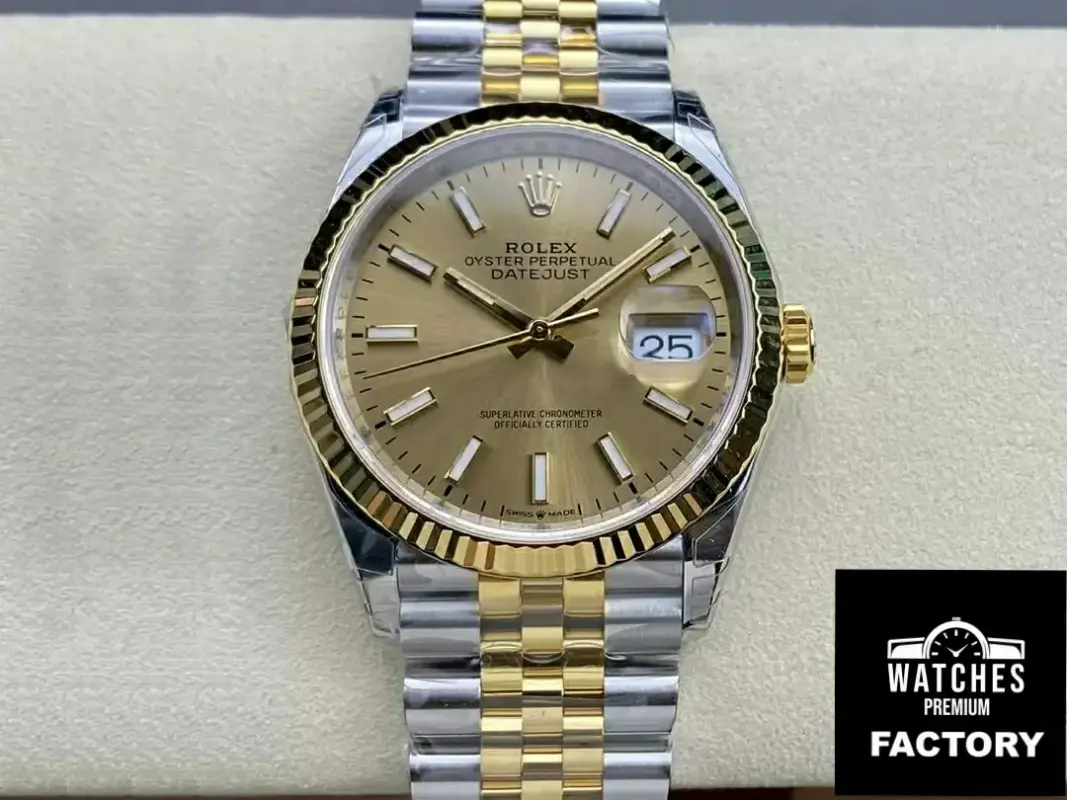
What sets the 1603 apart is its remarkable versatility. It pairs effortlessly with both business attire and casual wear, showcasing the thoughtful design behind its creation. The balance between functional daily wear and the refinement expected of a luxury watch solidifies the 1603’s status as an icon.
Collectibility and Affordability
The Rolex Datejust 1603 enjoys enduring appeal in the collector’s market, bridging the gap between early innovations and modern classics. Its historical significance, combined with relative accessibility compared to other vintage Rolex models, makes it a favorite among collectors.
Certain variations of the Rolex 1603 are particularly coveted, with rare dial colors and unique hour marker configurations commanding higher prices. The “Sigma” dials, featuring Greek letters indicating gold hour markers, are especially sought after by serious collectors.
When compared to other vintage Rolex models, especially sports watches like the Submariner or Daytona, the Datejust 1603 offers exceptional value. It allows entry into vintage Rolex ownership without compromising quality or prestige, making it an attractive choice for collectors.
Caring for Your Vintage Treasure
Owning a Rolex, particularly a vintage replica Rolex Datejust 1603, goes beyond mere possession; it’s about preserving horological excellence for future generations. Proper care is essential for longevity and value retention. While each model has specific needs, general maintenance principles apply across the Rolex range.
A Rolex Datejust 1603 should be serviced every 5-7 years, with costs typically ranging from $500 to $1,000. Regular maintenance is vital for preserving functionality and value. In between services, store the watch in a cool, dry place and consider using a watch winder to keep the movement active. Daily care includes gently wiping the case and bracelet to remove dirt and sweat, while caution should be exercised around water.


Hot Sale Replica Watches
Rolex-submariner
Rolex Replica Watch Submariner 40mm Black Dial Stainless Steel 16610
Rolex-submariner
Rolex Replica Watch Submariner 18K White Gold Blue Dial Ceramic Bezel 116619LB
Rolex Sea-Dweller
Rolex Replica Watch Seadweller 43mm Yellow Gold Steel 126603
Rolex President
Rolex Replica Watch President Crown Collection Yellow Gold Diamond Ladies 179298
Rolex GMT-Master
Rolex Replica Watch GMT Master II Black Blue Batman Steel 126710 BLNR
Rolex GMT-Master
Rolex Replica Watch GMT Master II 18K White Gold Pepsi Bezel 116719
Rolex Daytona
Rolex Replica Watch Daytona Yellow Gold Champagne Dial 116508
Rolex Daytona
Rolex Replica Watch Cosmograph Daytona Steel Yellow Gold 116503